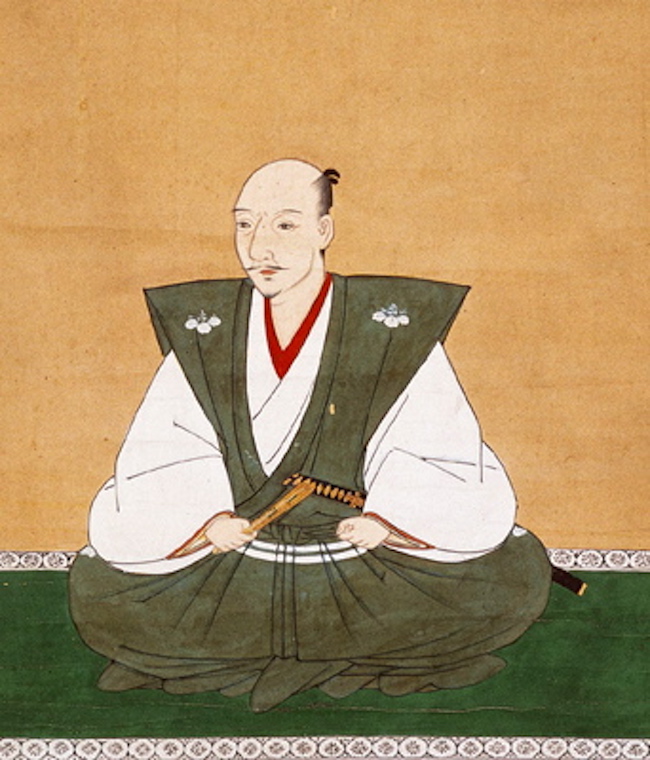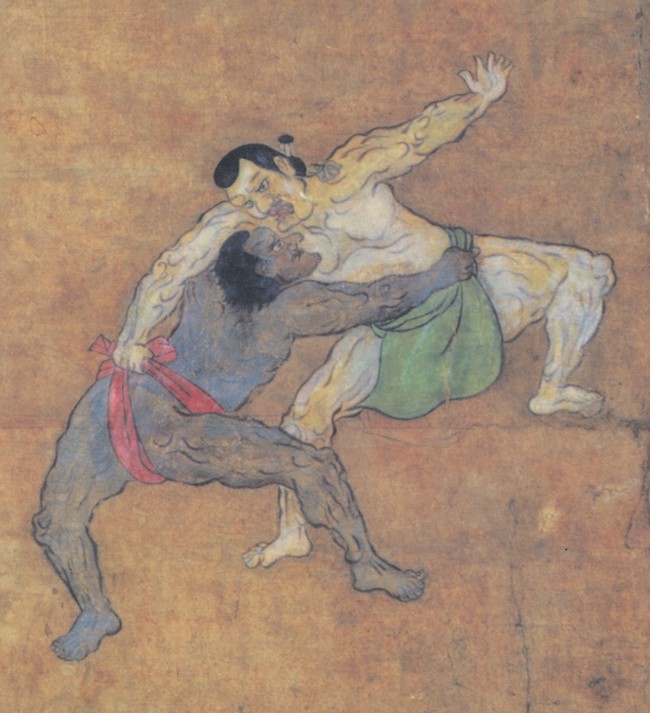Apr 16, 2019
Yasuke: From Mozambique to Slave to Samurai
Whether it is on the subway, in a restaurant or just walking down the street, most foreigners in Japan know what it’s like to be stared at and pointed out as different. There is generally nothing evil in it, and more often than not it is brought about by simple curiosity. But imagine if that curiosity was so intense that people died in the crush to see you. That is what it was like for Yasuke, the first African Samurai.
Yasuke’s origins
Nothing is known of Yasuke’s early life, where he was from – most scholars believe Mozambique, others say west Africa – his real name, and no there are no contemporary pictures of him. What we do know is that he was taken on as a ‘servant’ (i.e., a slave) by Jesuit missionaries and posted to Alessandro Valignano, Visitor of Missions in the Indies as a page, and in 1579 arrived on a Portuguese ship in Japan.

A Jesuit group, accompanied by an African page
At this time, a few missionaries from Portugal aside, foreigners from the west were virtually unseen in Japan, and crowds would form wherever they went. With Yasuke, over six foot tall, muscular and black skinned, the amazement amongst the Japanese populace was exponential, and reports state that to catch a glimpse of the African a mob once broke down the door of the church in which he was residing, and several people were killed in the melee.
Meeting Nobunaga
Yasuke’s fame soon spread, coming to the attention of the warlord Oda Nobunaga, the country’s most powerful samurai ‘daimyo’ (essentially chief or general). Nobunaga is said to have been an early adopter of western ways, being one of the first recorded Japanese to use a table and chairs, drink wine from goblets and wear western dress. It could be hypothesized that this was merely a clever ruse to ingratiate himself with the Portuguese and get access to their powerful weaponry, but either way, we know that he used these connections to demand an audience with Yasuke.

Oda Nobunaga
Contemporary reports show that Nobunaga was immediately struck by Yasuke who was “black as an ox, healthy and good looking and possessed the strength of ten men,” and was so unbelieving of his skin color that he had him stripped to the waist and scrubbed to see if the ‘ink’ would come off. But what impressed him most was his ability to speak Japanese, so much so that he insisted that Yasuke remain with him in his court, while Valignano was returned.
Becoming Samurai
Although Yasuke’s primary function was as a bodyguard to the daimyo, he soon became a principal advisor, particularly in battle and military strategy, and is said to have fought at the Battle of Tenmokuzan. This position was rewarded in around 1581 when he had bestowed upon him the rank of samurai, perhaps the first foreigner to be honored in this way, and was given property, money, and wives, as well as the right to carry two swords. Unfortunately, Yasuke’s time as samurai was short lived, as a disaster was just around the corner.
Nobunaga is Betrayed
In 1582, Nobunaga and an entourage of just 30 of his closest pages, Yasuke included, stopped at Kyoto’s Honno-ji temple to partake in a tea ceremony. While there they came under attack from the army of the warlord’s most trusted retainer, Akechi Mitsuhide. Yasuke fought bravely against the coup d’ état and managed to escape with Nobunaga’s son, Nobutada, to Azuchi Castle. Alas, Nobunaga was injured in battle, and as the temple burned, he committed seppuku, ritual suicide.
With Nobunaga dispatched, Akechi moved on to Azuchi Castle where, despite battling bravely, Yasuke was forced to accept defeat, doing so by following the western custom of relinquishing his sword to his vanquishers. Confused by this action – it was generally understood that samurai admitted defeat by performing seppuku – the soldiers turned to Akechi. Being less enlightened than Nobunaga, the betrayer stated that Yasuke was ‘nothing more than a beast’ who could not understand, nor be worthy of the honor of seppuku. As a result, he was stripped of his samurai status and returned to the Jesuits
Yasuke’s Legacy
And this is where, as far as the history books are concerned, Yasuke’s story comes to an end. Nothing is known of what happened to Yasuke after that.

However, that is not to say that he was forgotten, and Yasuke makes occasional appearances in Japanese popular culture. Children’s author Kurusu Yoshio won critical acclaim for his ‘Kurosuke,’ a tale depicting Yasuke’s life, and the Afro Samurai manga comics by Takashi Okazaki were influenced by Yasuke. Furthermore, Netflix is currently producing an anime called ‘Yasuke,’ bringing this tale to life, albeit with magic and robots.
Still, it can surely not be any more fantastic than the real-life story of a man who rose from slavery to become one of the most influential samurai of his era.
Image: via wikicommons [Public Domain]
Image: via wikicommons [Public Domain]
Image: via wikicommons [Public Domain]
Image: by Seven Seas Entertainment via wikicommons [Fair Use]


About the author